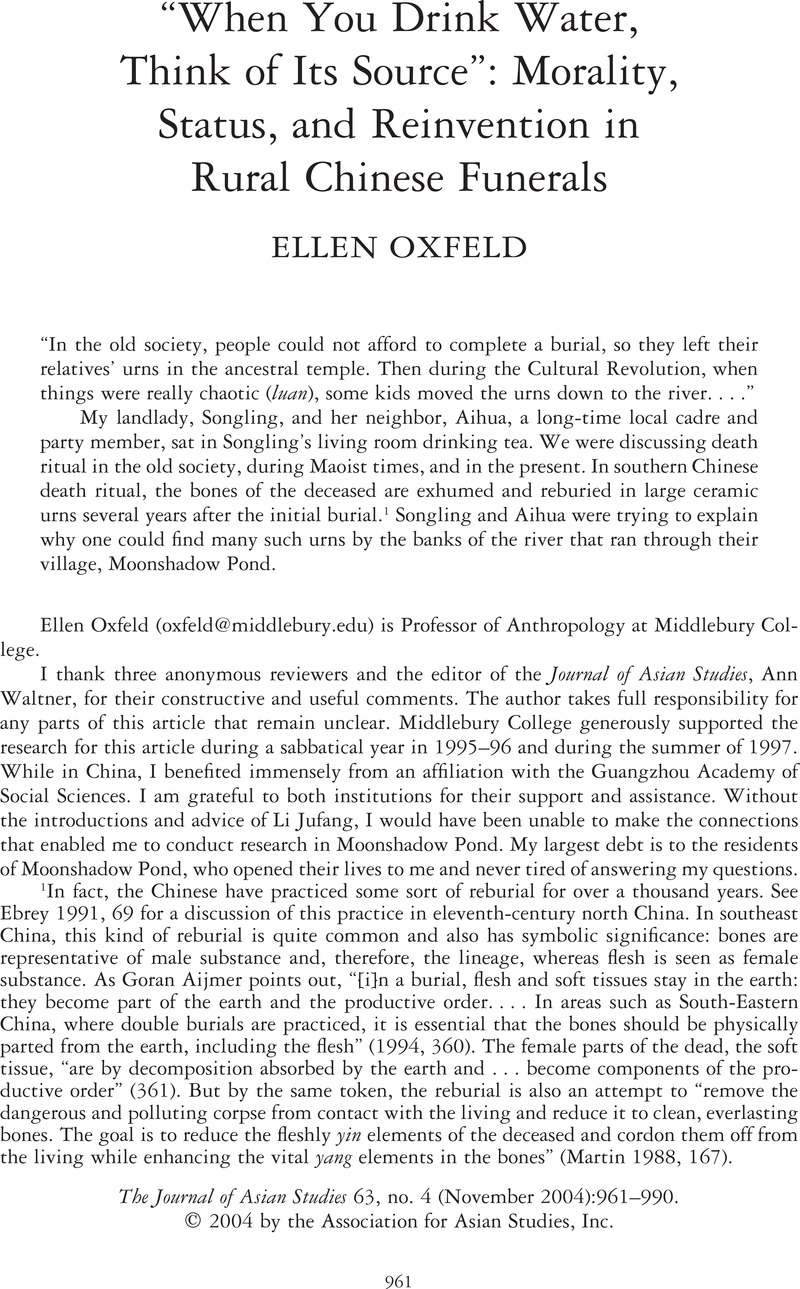Crossref Citations
This article has been cited by the following publications. This list is generated based on data provided by Crossref.
Sutton, Donald S.
2007.
Death Rites and Chinese Culture.
Modern China,
Vol. 33,
Issue. 1,
p.
125.
Goossaert, Vincent
and
Ling, Fang
2008.
Les réformes funéraires et la politique religieuse de l’État chinois, 1900-2008.
Archives de sciences sociales des religions,
Vol. 144,
Issue. ,
p.
51.
Ho, Wing-Chung
2008.
Experiencing the De-statization of the Family Ritual in Postsocialist China: Morality, Resource and State Power.
The Journal of Comparative Asian Development,
Vol. 7,
Issue. 2,
p.
231.
Yan, Yunxiang
2009.
The Good Samaritan's new trouble: A study of the changing moral landscape in contemporary China1.
Social Anthropology,
Vol. 17,
Issue. 1,
p.
9.
Nelson, Margaret K.
2013.
Fictive Kin, Families We Choose, and Voluntary Kin: What Does the Discourse Tell Us?.
Journal of Family Theory & Review,
Vol. 5,
Issue. 4,
p.
259.
BAYLY, SUSAN
2014.
How to Forge a Creative Student-Citizen: Achieving the Positive in Today's Vietnam.
Modern Asian Studies,
Vol. 48,
Issue. 3,
p.
493.
Coe, Kathryn
and
Begley, Ryan O.
2016.
Ancestor Worship and the Longevity of Chinese Civilization (祖先崇拜与中华文明的长期延续).
Review of Religion and Chinese Society,
Vol. 3,
Issue. 1,
p.
3.
BAYLY, SUSAN
2020.
Beyond ‘Propaganda’: Images and the moral citizen in late-socialist Vietnam.
Modern Asian Studies,
Vol. 54,
Issue. 5,
p.
1526.
Guo, Man
and
Herrmann-Pillath, Carsten
2023.
The Cultural Governance of Death in Shenzhen.
The China Quarterly,
Vol. 254,
Issue. ,
p.
396.



